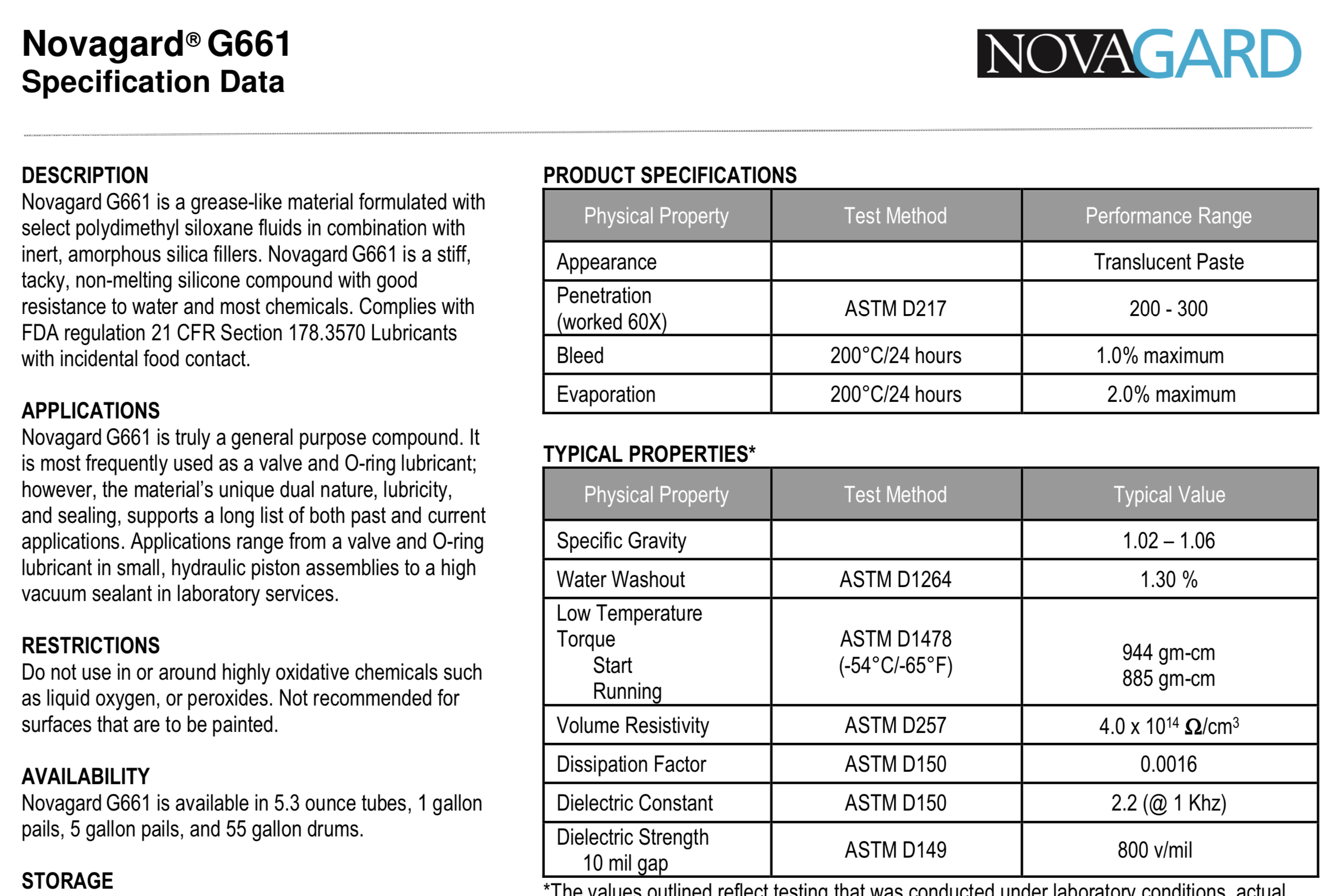Difference between revisions of "Silicone dielectric compound"
Jump to navigation
Jump to search
| (2 intermediate revisions by the same user not shown) | |||
| Line 3: | Line 3: | ||
*[[Media:Silcione compound 03g661 data sheet.pdf]] | *[[Media:Silcione compound 03g661 data sheet.pdf]] | ||
*[https://en.wikipedia.org/wiki/Polydimethylsiloxane Chemical name is polydimethylsiloxane] | *[https://en.wikipedia.org/wiki/Polydimethylsiloxane Chemical name is polydimethylsiloxane] | ||
| + | *Silicone compound Novagard G661 | ||
| + | *For technical information contact Craig Strachan from Novagard at (216) 570-9292 | ||
| + | *Recommendation from Craig is to wipe vacuum chamber off with acetone, then iso-propanol, followed by vacuum bake at 250C. Data sheet above shows that polydimethylsiloxane will evaporate (2% in atmosphere) at 200 C. | ||
| + | *[[File:Novagard G661 silicone dilectric ompound properties.png]] | ||
Latest revision as of 10:58, 19 May 2021
- Media:Silicone dielectric compound.jpg
- Media:MSDS_G661_SiliconeGrease-2016.pdf
- Media:Silcione compound 03g661 data sheet.pdf
- Chemical name is polydimethylsiloxane
- Silicone compound Novagard G661
- For technical information contact Craig Strachan from Novagard at (216) 570-9292
- Recommendation from Craig is to wipe vacuum chamber off with acetone, then iso-propanol, followed by vacuum bake at 250C. Data sheet above shows that polydimethylsiloxane will evaporate (2% in atmosphere) at 200 C.
